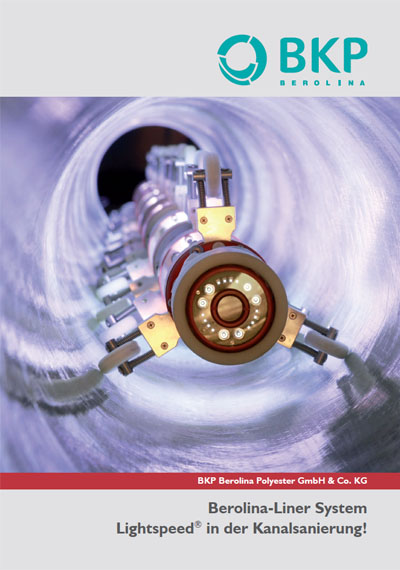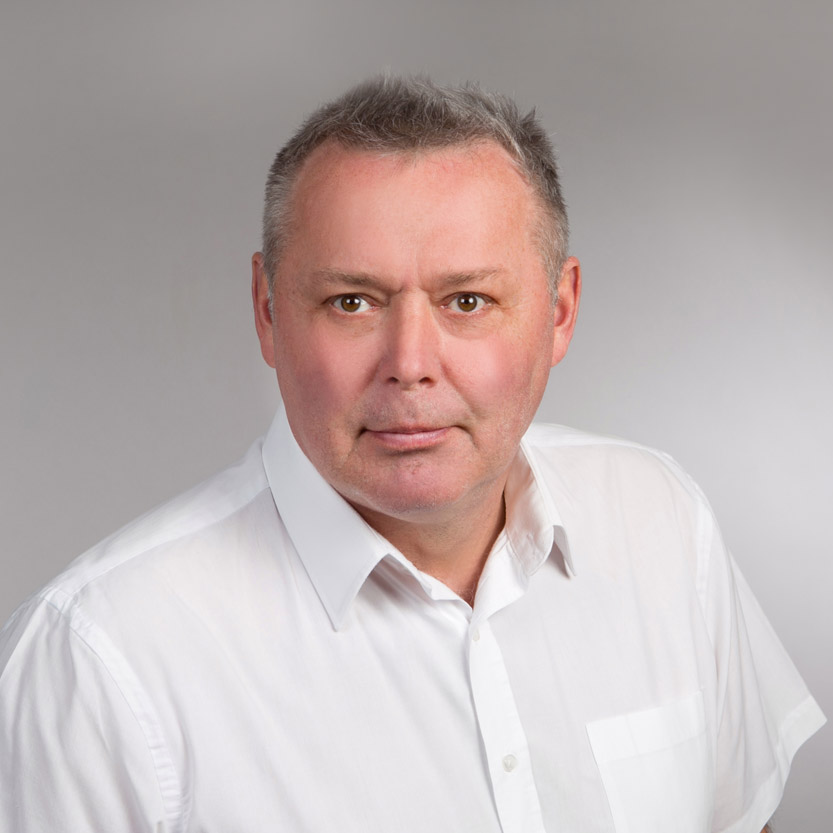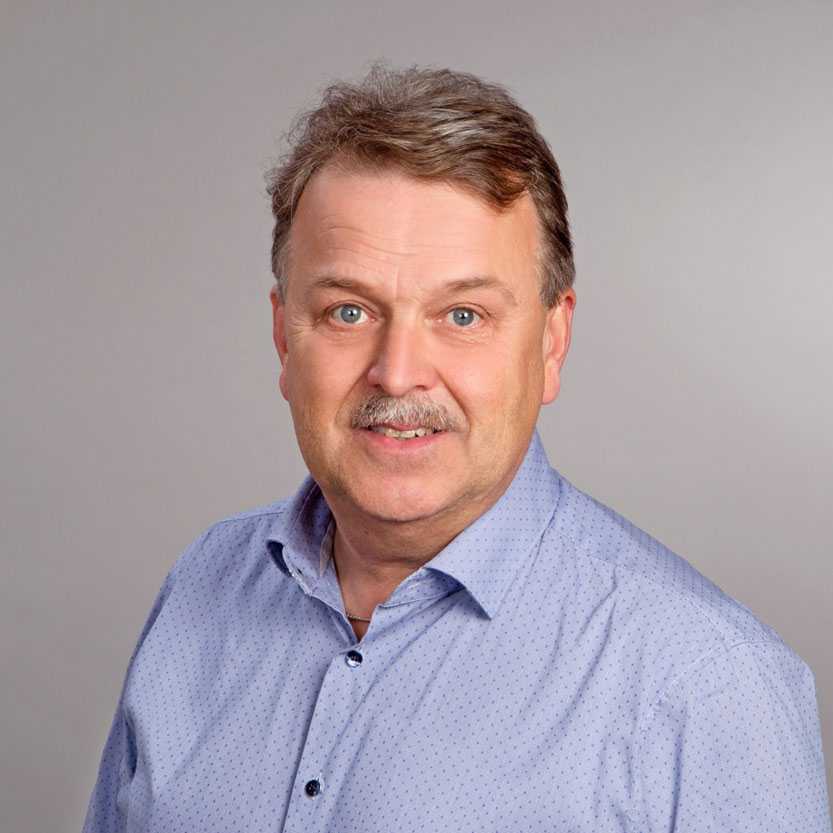Berolina-Liner: Advantages
- Seamless design
- Ready for installations up to 500 metres
- Can be stored for at least 5 months
- Particular extensibility
- Fast curing (particularly compared to felt liners)
- Smooth surface
- Suitable for all standard pipe profiles
- Abrasion protective layer
- Bridging small profile and cross-section changes
- Resin types depending on requirement (polyester resin, vinyl ester resin, polystyrene-free resin)
- Quality management to EN ISO 9001:2015
Berolina-Liner with IES: Additional advantage
Integrated Enhanced Security
- Can be a substitute for smooth slip film
- Reduces installation time
- Available up to DN 600
Reinforcement
Woven glass complex E-CR according to EN 14020-1, EN 14020-2 and EN 14020-3
Resins
Unsaturated polyester resins (UP resins)
- Type 1140 according to DIN 16946-2
- Group 3 according to DIN 18820-1
- Group 4 according to EN 13121-1
Vinyl ester resins (VE resins)
- Type 1310 according to DIN 16946-2
- Group 5 according to DIN 18820-1
- Group 7 B according to EN 13121-1
Polystyrene-free resins
Technical data
Density after curing (EN ISO 1183-2): 1.5g/cm³ (± 0.5 g/cm³)
Glass fibre content (EN ISO 1172 / by mass): 46% (± 8%)
Glass mass per unit area (per mm load-bearing wall thickness): 650 g/m² (+150/-100g/m²)
Short-term ring stiffness (EN 1228)*: ≥ 10,000 N/mm²
Short-term modulus of elasticity in flexure (EN ISO 178)*: ≥ 8,700 N/mm²
Short-term flexural stress (EN ISO 178)*: ≥ 150 N/mm²
Reduction factor for long-term values (EN 761): A = 1.45
Long-term ring stiffness (EN 1228)*: ≥ 6,800 N/mm²
Long-term flexural stress (EN ISO 178)*: ≥ 105 N/mm²
Laminated construction: Multi-layer, seamless and overlapping in longitudinal direction; overlaps are offset
Elongation on calibrating: ~ 0.0%
Allowable diameter tolerances of the old pipes: DN ≤ 800: ± 5%; DN > 800: ± 2%
* Carrier laminate thickness to EN ISO 11296-4 (07/2011)
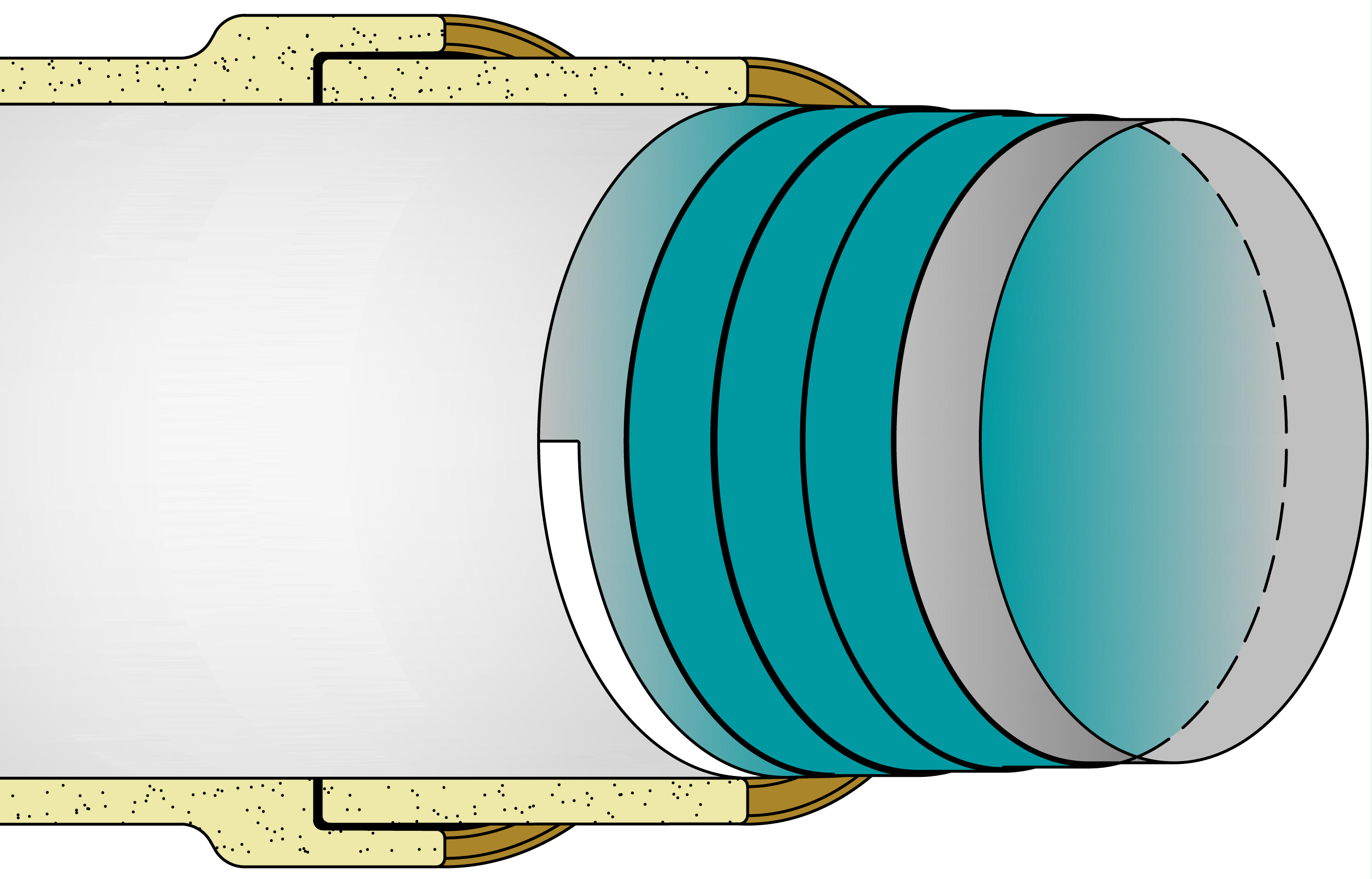
Video: Berolina-Liner-System – Virtuelle Baustelle
© 2013
Technische Daten
Reinforcement
Woven glass complex E-CR according to EN 14020-1, EN 14020-2 and EN 14020-3
Harze
Unsaturated polyester resins (UP resins)
- Type 1140 according to DIN 16946-2
- Group 3 according to DIN 18820-1
- Group 4 according to EN 13121-1
Vinyl ester resins (VE resins)
- Type 1310 according to DIN 16946-2
- Group 5 according to DIN 18820-1
- Group 7 B according to EN 13121-1
Polystyrene-free resins
Technical data
Due to its variability, the Berolina-Liner offers maximum planning certainty and focus on the specific objective for trenchless pipe rehabilitation. The Berolina Liner is tailor-made to the information you provide regarding the cross-section, required stiffness and any other requirements of the specific situation.
Density after curing (EN ISO 1183-2): 1.5g/cm³ (± 0.5 g/cm³)
Glass fibre content (EN ISO 1172 / by mass): 46% (± 8%)
Glass mass per unit area(per mm load-bearing wall thickness): 650 g/m² (+150/-100g/m²)
Short-term ring stiffness (EN 1228)*: ≥ 10,000 N/mm²
Short-term modulus of elasticity in flexure (EN ISO 178)*: ≥ 8,700 N/mm²
Short-term flexural stress (EN ISO 178)*: ≥ 150 N/mm²
Reduction factor for long-term values (EN 761): A = 1.45
Long-term ring stiffness (EN 1228)*: ≥ 6,800 N/mm²
Long-term flexural stress (EN ISO 178)*: ≥ 105 N/mm²
Laminated construction: Multi-layer, seamless and overlapping in longitudinal direction; overlaps are offset
Elongation on calibrating: ~ 0.0%
Allowable diameter tolerances of the old pipes: DN ≤ 800: ± 5%; DN > 800: ± 2%
* Carrier laminate thickness to EN ISO 11296-4 (07/2011)
Virtual construction site
© 2013
Area of use (Berolina-Liner)
Gravity sewers
- Circular profiles: DN 150 (6“) – DN 1,600 (63“)
- Ovoid cross-sections: 200/300 mm–1,200/1,800 mm
Other sizes on request.
Area of use (Berolina Liner with IES)
Gravity sewers
- DN 150 – DN 600
The wall construction of our liner
BKP developed its liner from the outset under a single maxim: optimum benefit for each user. An innovative and flexible production process was therefore created, which allows a large number of individual parameters to be specified – for a product that combines the advantages of previously known liners with new additional qualities. The Berolina-Liners are seamless. Depending on the requirements profile, they are made of glass fibre or polyester streets, or even a sandwich construction of both materials. They are light-cured and have a theoretically endless strain behaviour. This particular feature enables the engineered wall construction.
The glass fibre complexes in the Berolina-Liner are arranged overlapped and offset. This produces decisive advantages.
The Berolina Liner can be laid as a single element, even at cross-sectional size and/or shape changes and can easily adapt to the circumstances in situ. The continuous fibre orientation in the circumferential direction optimises the force flow without preventing strain (extension).
The lining method
The Berolina-Liners are made of resin impregnated glass fibre and/or polyester sheets between two water and polystyrene-tight film tubes. They are delivered to site ready to lay, but can also be stored for several months.
After thorough cleaning, the slip liner is then winched in and the assembled Berolina Liner is pulled into the pipe to be rehabilitated. This method is also called the “winched in place insertion (WIP)” method. The two ends are sealed with packers, the hose is inflated with compressed air and is pressed against the pipe wall. The outer film of the Berolina Liner prevents contamination of the soil and groundwater as well as preventing resin from penetrating the inlets.
The Berolina Liner now adapts to all changes in the cross-section shape and size with form fit. After the Berolina Liner has been completely inflated, a special UV light source is pulled into the liner through a packer. Using compressed air as the medium also offers the advantage that the not yet cured Berolina Liner can be controlled using a special camera while the light source is being pulled in. The UV lamps in the lamp train are then pulled through the Berolina Liner with a defined speed. The UV light cures the resin-impregnated fabric, then the inner protective film is removed. With sealed tube ends, the curing is emissions-free. This means that, in a very short time and in an eco-friendly way, a new pipe is created in the old pipe, which is a stable inner lining for all standard pipe materials including masonry sewers. The small cross-sectional loss is largely compensated for functionally by the smooth and abrasion-resistant inner surface of the Berolina Liner. The curing rates vary depending on the diameter and wall thickness of the Berolina Liner. The Berolina-Liners are “endlessly” produced and can all be laid “as one piece” over long distances.
After the curing the inlets are easy to find, because they are visually marked very clearly within the liner due to its high extension properties. They are cut open again using standard methods.
Virtual construction site
In the following video you can see a virtual construction site. Here you can see in detail how the Berolina-Liner is constructed and how it can be laid in the shortest possible time.
© 2013
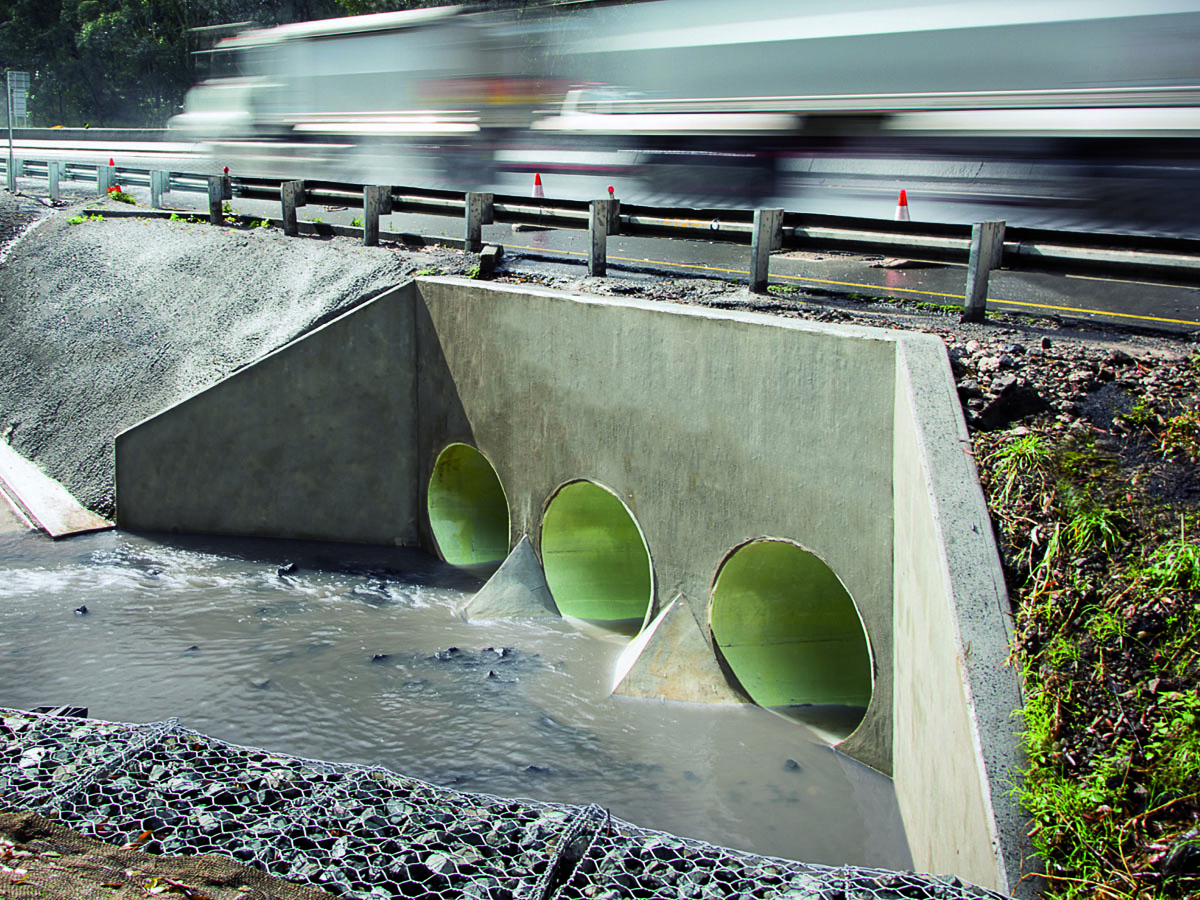
Area of use (Berolina-Liner)
Gravity sewers
- Circular profiles: DN 150 – DN 1,600
- Ovoid cross-sections: 200/300 mm–1,200/1,800 mm
Other sizes on request.
Area of use (Berolina-Liner with IES)
Gravity sewers
- DN 150 – DN 600
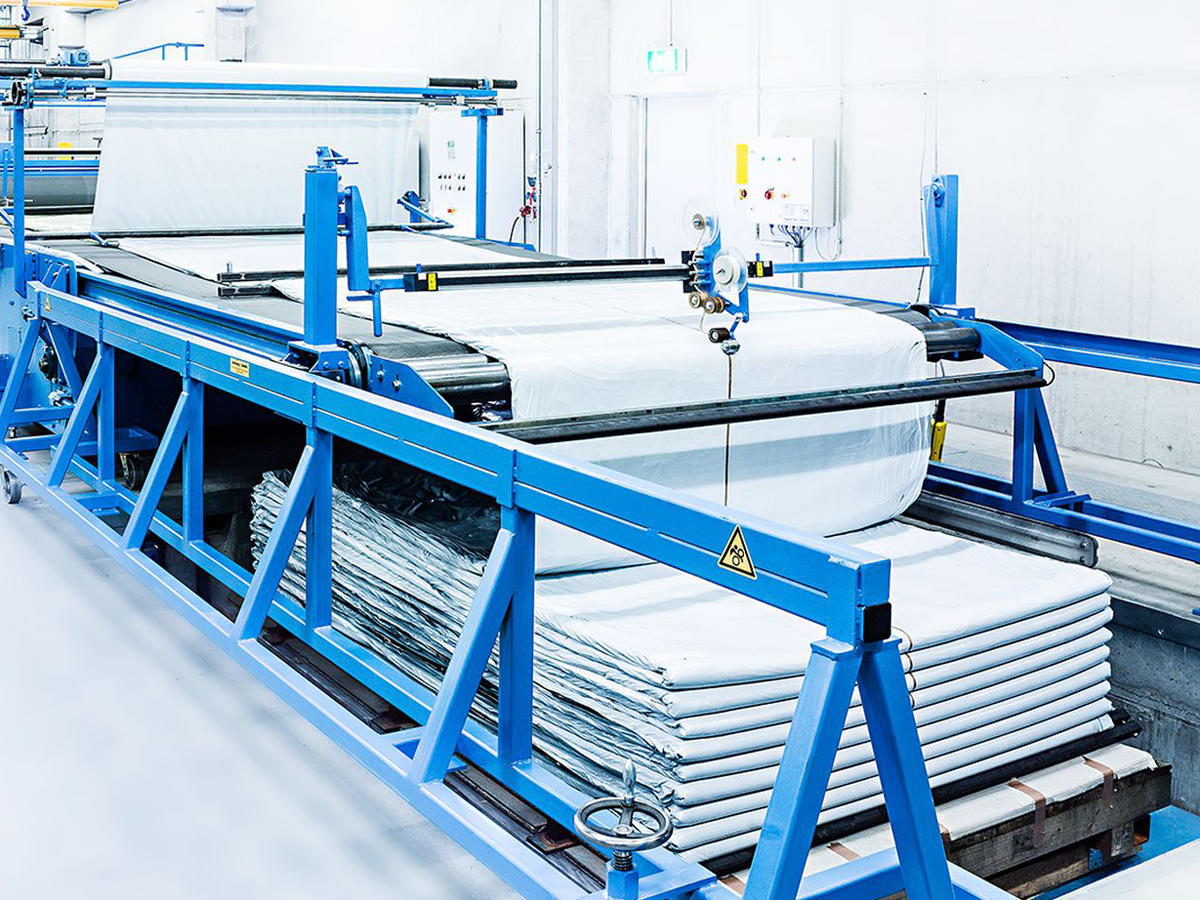
The wall construction of our liner
BKP developed its liner from the outset under a single maxim: optimum benefit for each user. An innovative and flexible production process was therefore created, which allows a large number of individual parameters to be specified – for a product that combines the advantages of previously known liners with new additional qualities. The Berolina-Liners are seamless. Depending on the requirements profile, they are made of glass fibre or polyester streets, or even a sandwich construction of both materials. They are light-cured and have a theoretically endless strain behaviour. This particular feature enables the engineered wall construction.
The glass fibre complexes in the Berolina-Liner are arranged overlapped and offset. This produces decisive advantages.
The Berolina-Liner can be laid as a single element, even at cross-sectional size and/or shape changes and can easily adapt to the circumstances in situ. The continuous fibre orientation in the circumferential direction optimises the force flow without preventing strain (extension).

The lining method
The Berolina-Liners are made of resin impregnated glass fibre and/or polyester sheets between two water and polystyrene-tight film tubes. They are delivered to site ready to lay, but can also be stored for several months.
After thorough cleaning, the slip liner is then winched in and the assembled Berolina-Liner is pulled into the pipe to be rehabilitated. This method is also called the “winched in place insertion (WIP)” method. The two ends are sealed with packers, the hose is inflated with compressed air and is pressed against the pipe wall. The outer film of the Berolina Liner prevents contamination of the soil and groundwater as well as preventing resin from penetrating the inlets.
The Berolina Liner now adapts to all changes in the cross-section shape and size with form fit. After the Berolina Liner has been completely inflated, a special UV light source is pulled into the liner through a packer. Using compressed air as the medium also offers the advantage that the not yet cured Berolina Liner can be controlled using a special camera while the light source is being pulled in. The UV lamps in the lamp train are then pulled through the Berolina Liner with a defined speed. The UV light cures the resin-impregnated fabric, then the inner protective film is removed. With sealed tube ends, the curing is emissions-free. This means that, in a very short time and in an eco-friendly way, a new pipe is created in the old pipe, which is a stable inner lining for all standard pipe materials including masonry sewers. The small cross-sectional loss is largely compensated for functionally by the smooth and abrasion-resistant inner surface of the Berolina Liner. The curing rates vary depending on the diameter and wall thickness of the Berolina Liner. The Berolina Liners are “endlessly” produced and can all be laid “as one piece” over long distances.
After the curing the inlets are easy to find, because they are visually marked very clearly within the liner due to its high extension properties. They are cut open again using standard methods.
Virtual construction site
In the following video you can see a virtual construction site. Here you can see in detail how the Berolina Liner is constructed and how it can be laid in the shortest possible time.
© 2013






